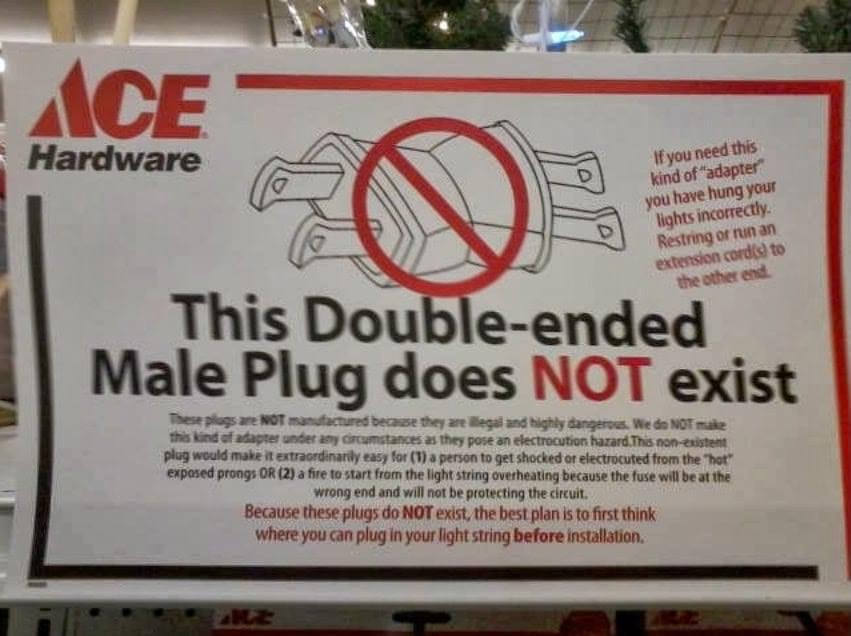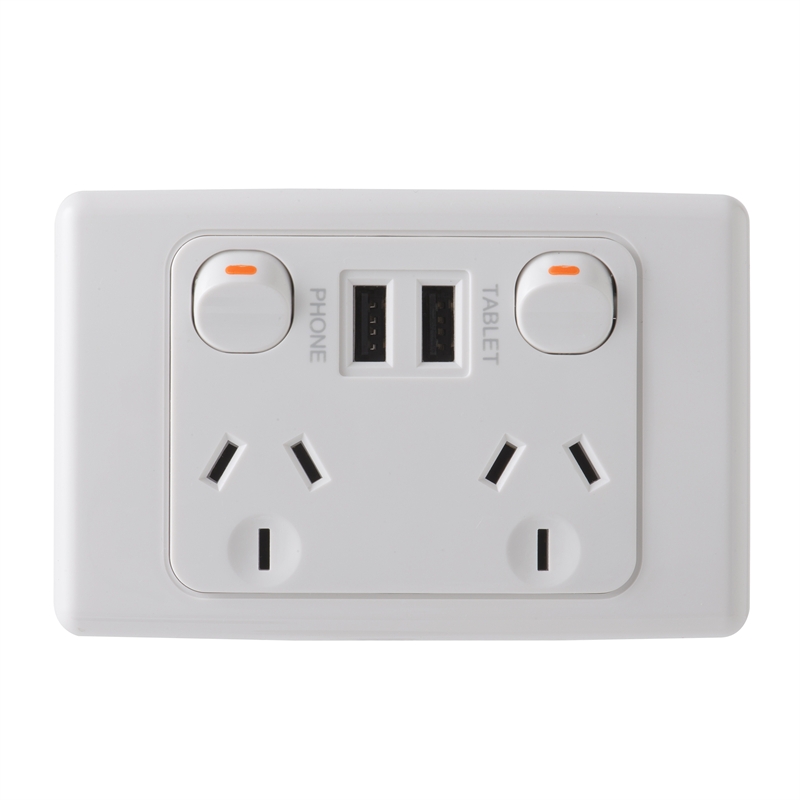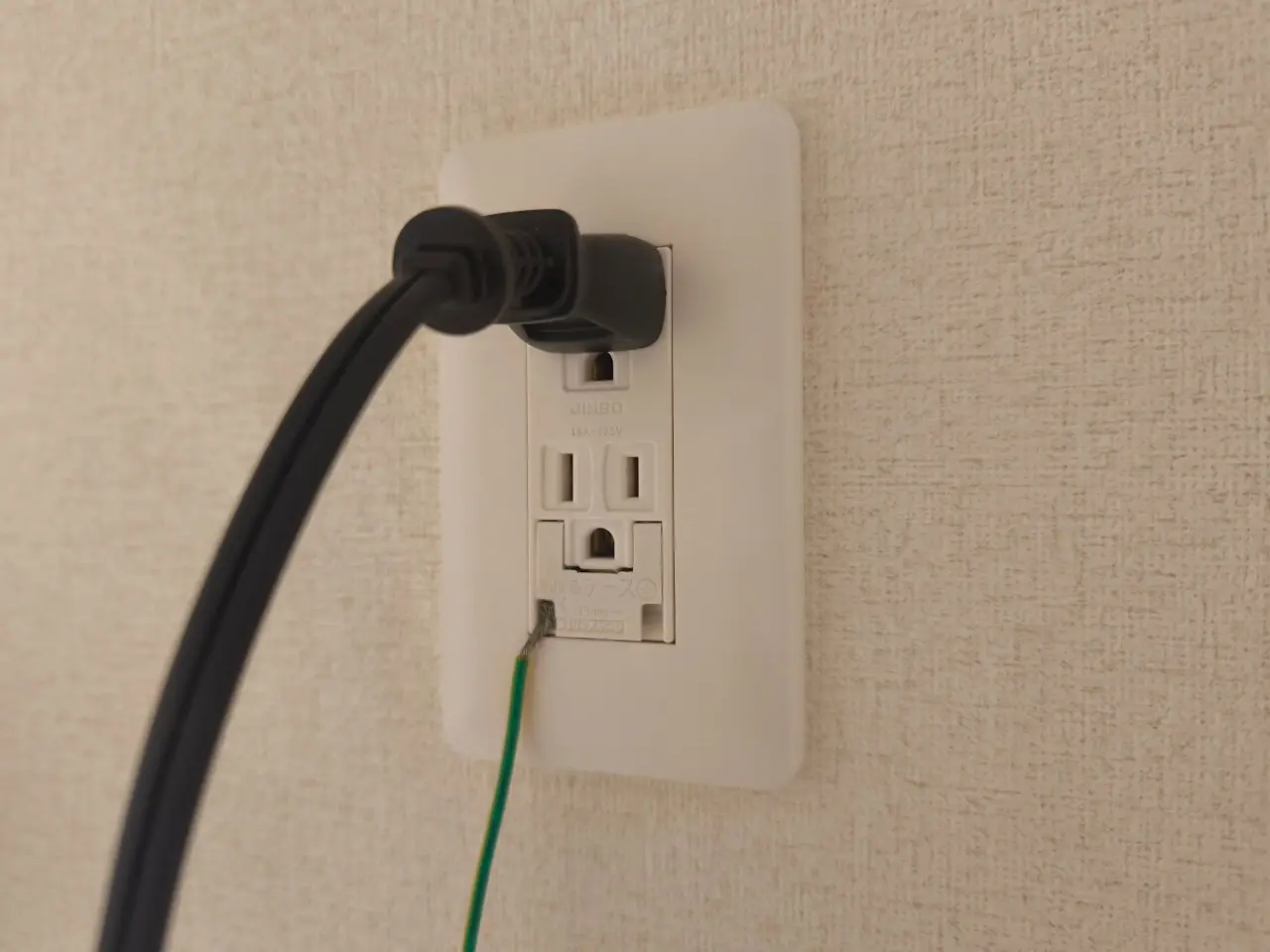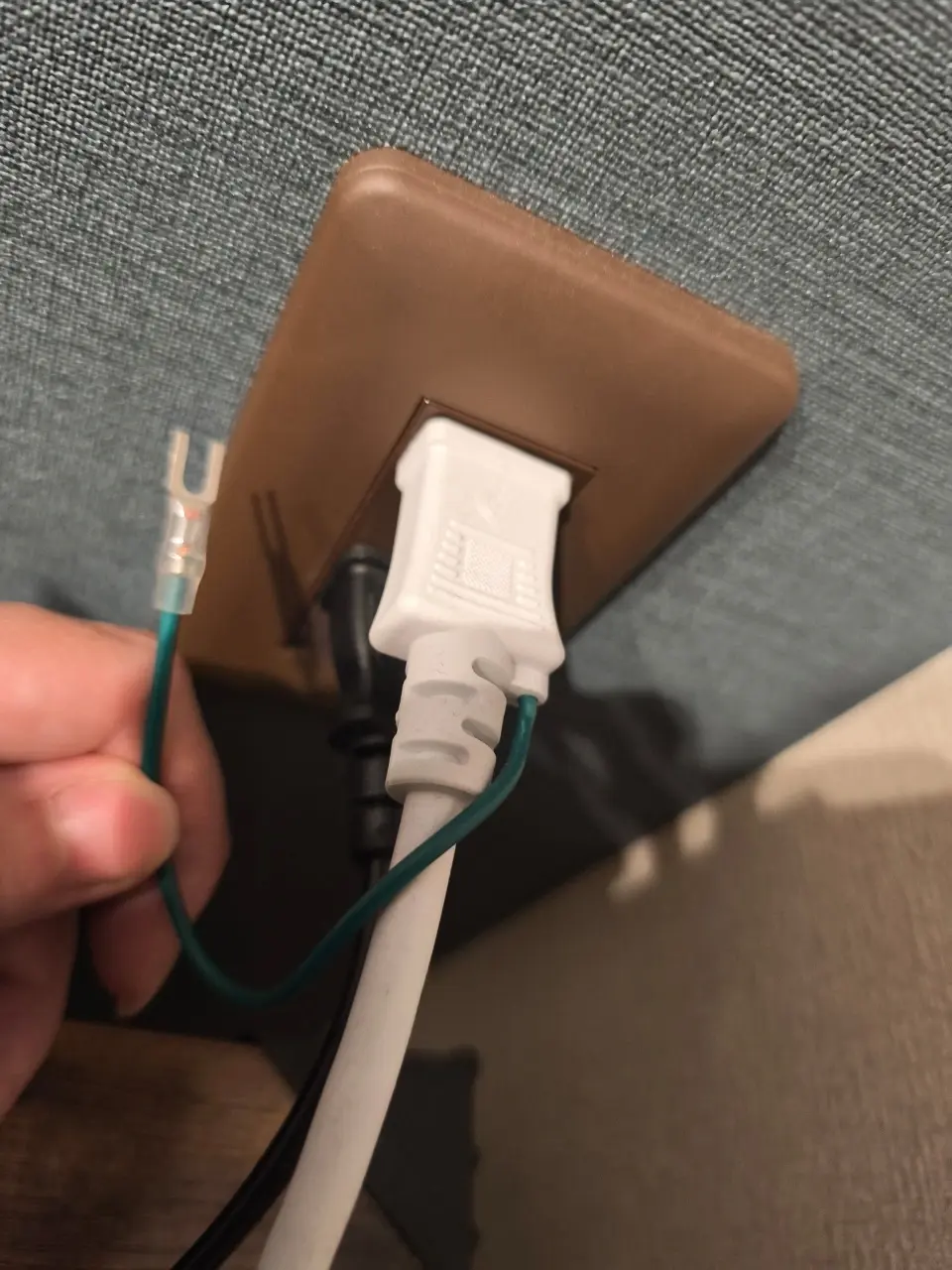The British one. It has a switch and a fuse, and later versions have age-verification so your kids can no longer plug in your adult toys.
Had me in the first half. Well played.
And your adult toys must be licensed, of course. To protect the kids.
Its important you don’t allow them access so you need to keep them on your person in a place thats very hard to access. So hard.
Your last sentence is a double entendre?
double in your entendre.
My toys are wireless…
You’ll need a broadcasting licence for that, mate.
Only if they’re charged.
P.S.: since battery cells need to be disposed properly, they are now an 18+ purchase.
Age verification on batteries?
These are the best anyway
Nah, they’re too power limited. What you really want will require a 3 phase hookup to the bedroom.
Just be careful, three phase hookups = potential hurt feelings and messy drama.
I’m actually kinda surprised that more don’t have switches, but I suppose if you have radial rather than ring circuits you don’t have to play ‘hunt the appliance that tripped all your switches’ quite so hard
Hey now, let’s not give BSI and NESO any ideas mate.
Real
In my opinion it’s Type-F
Because:
- It’s bi-directional
- It’s grounded and ungrounded plugs use the same socket
- It’s already widespread (50+ countries) source
- Your fingers can’t touch the live wire as you’re plugging in a wire
- It’s recessed
- Low footprint
- Accepts Type-C
What’s the difference of C and F type?
C is mostly for low power devices
F is basically a heavy duty upgrade of C, it’s got grounding on the side and can handle 16A (ovens, heaters etc.)
Don’t you get numpties plugging F appliances into C sockets then complaining to customer service that the induction stovetop doesn’t boil water for tea fast enough?
no, because it’ll just trip fuse, and stoves are wired directly anyway
You cant the plug is thicker
Can you plug C into F?
Yeah. You cant plug f into c because f is thicker by a bit but c goes into f.
The type-C shown in the picture is also not the only form it has and maybe partly misleading, the plug usually is significantly smaller and flat, and power strips can feature multiple of those in less space.



Agreed. The best.
I see a lot of your comments about F being objectively same or better compared to G. The only thing I’d throw into the mix is the socket switch feels so logical, I’m really surprised it’s not more standard.
High frequency use case: I don’t need my microwave on all the time showing me the time, so I switch it off at the socket unless I’m using it
Low frequency use case: before going on holiday I switch all the electrics off at the sockets
I never understood why every appliance in the kitchen needs to display the time. lol
Why not switch off the fuse in the holiday case? More time efficient.
Socket switch isn’t really a feature of the socket itself. I’ve had schuko sockets with switches. It’s just not as common
Furthermore, appliances compatible with Type F are almost always compatible with Type E as well, it’s just a matter of including both grounding mechanisms which they all do to avoid designing multiple cords.
I haven’t yet visited the UK so the only time I’ve had trouble plugging in something in Europe is in shudders Italy.
Bi-directional is a double-edged feature.
It means that there is no reliable way of identifying line and neutral wire, which requires more complex double switches downstream.
Also, F is unnecessarily clunky and big and hard to make a weather-proof version of because of the complex shape.
And type-E. Most EU plugs are F-E compatible, because countries go about alternating them. Spain F, France E, Germany F, Poland E. You build a plug with a hole for the E ground bolt and a cutout for the F side contacts.
Hear me out, type L, the one in the middle, is the best socket, as it has all the things you talked about, but also accepts Italian plugs.
Type L bipasso (the one on the side) instead is the most space efficient, while retaining type C compatibility and grounding. Type L plugs also have plastic bits at the end to avoid contact with live wire (like UK one).
Jawoll!
As the least biased swiss person. Type J (or type N, Idk) is so much better. We put three plugs on the same surface as you have 1. I am always frustrated to see how impractical your plugs are when I go to the EU
It’s bi-directional
That’s bad.
Every device produced in the past few decades doesn’t care which wire is live.

Clear, informative and solution oriented. I wish all signs were this good.
Why?
Why?
No it’s bi-winning
Type K. I mean how can you say no to that face?

It’s the only one that looks happy to be there.
:D
Type I
Earth pin doesn’t cause the plug to murder your feet like the UK plug.
Angled pins to prevent cross polarisation.
Localised power switch per socket so you can turn something on or off with your toe and not bend down to unplug it.
Looks like a ghost face and when in the double gang formation the switches when on looks like the plate is high.

The main problem with type I (and a few others) is that it’s not recessed. If it comes loose a bit, you still have the problem of exposed live pins.
And the thin pins means that with any weight (wall-wart, etc.), it starts to come out.
Doubly so if it’s set into thin plasterboard that already wobbles.Pins are insulated since 2003.
Also:
Thin stamped construction is cheap, but can still be fitted with sleeving on the live (active and neutral) pins like UK & europlug, but not US plugs. This prevents objects or fingers getting to live pins on a partially inserted plug.
Industry has agreed that leads exit either straight out, or down-and-right, so there is no conflict for horizontal or vertical sockets. Sockets are universally installed earth-down.
Reasonably compact.
Yep us Aussies have the objectively best plug.
New world solutions. I agree.
I’m a G guy at heart but use I now. My main issue is how easily the pins can bend.
Oh, a list of things each identified by a different letter, better put them in a completely random order.
Easy. Type G. For safety. If you’re worried about night-time attacks from ninja you can leave a few plugs by your bedroom door and windows with the pins upward. They will rue the day they entered that room in the dark!
Type G. For safety.
G
Type F.
SCHUKO PLUG SUPREMACY FOREVER!
Type E and F plugs are not really a thing anymore, today it’s more common to find combined Type E/F plugs.
Fuses in british plugs are a mistake and only a requirement because of sketchy practices allowed in british electrical code immediately after WW2. Nobody else does that because nowhere else electric code is built in such a way that it is necessary. Switch seems to be mildly useful tho
F plugs are the only type I’ve ever seen in all of Scandinavia, Germany, Spain and The Czech Republic. Never in my life have I seen an E plug or anything resembling a variation of E+F combined in any way. Only F. I don’t understand how you can say they “are not really a thing anymore”.
You mean not a thing in the UK?
UK uses type G. Type E/F plug has both contact for grounding pin like in type E and two sliding ground contacts on side like in type F. Sockets are either E or F, and i’ve mostly seen E
Oh you mean the plugs, as opposed to the sockets? Then I misunderstood. 😄
E is only common in five countries, F is more widely used.
I’ve seen E in France.
Not really the point, what I’m saying is that F sockets are definitely still “a thing”.
Oh, yeah, absolutely. The best thing. I just wanted to say that E type plugs are also in use.
The best thing 😆 Yeah they are pretty great. Admittedly I am biased 😅
I thing it is about the cord vs the plug. The plugs are as they are in the picture, but most cords are in F+E configuration. That is, there is the ground plates on the side of the cord (F) and there is a hole in the cord with a springplate to connect to the ground thingy in thr plug (E). I have two extension cords at home of the same brand, one in E and one in F configuration, but all my cords are compatible with both. I’m a bit unsure on this, but I may have seen a plug with E+F configuration in a country which usually goes E, but definetly never in a country with F config.
I think you mean plugs vs sockets. I was talking about sockets, but I mistakenly wrote plugs. I think I misunderstood the original comment in that regard.
Went to Poland for a few days and encountered the type e plugs and I immediately hated them because they interfere with chargers and they weren’t reversible.
Fuses mean protection is localised. If the socket is good for 13A, but the cable is only safe to 5A, you can fuse at 3A or 5A, and know it’s safe.
This is partially useful for extension leads. We don’t have to worry about overloading a multiway extension. If we do, it will pop a 10p fuse, rather than cause a house fire.
Or you could just use thicker wires like everyone else, or drop the use of ring mains, which is the actual reason why fuses in plugs were introduced. The reason why this was done was post-WW2 copper shortage. In other countries you’ll see more likely star type circuit
Are you really going to change the fuse in the receptacle when you plug a different cable in?
Low amp rated extension cords are dangerous unless they have a fuse in the cable. Best practice is to always use a cable that is rated higher than the circuit breakers.
The fuse is in the plug itself. It goes with the cable. That’s the point of it! 🤣 It lets you down rate your cables from the breaker rating.
this is totally wrong. type F (“schuko”) is the main standard in europe.
It’s obviously the one in the country I live in. All the others that I have had zero experience with are from Satan.
I really think we should give japan more shit for this. Type A is terrible on it’s own merits, they don’t even polarize it. But then they have the gall to use two different frequencies with the divide in the middle of Honshu (the big island with the major cities). And unlike reasonable people they don’t do a “50 hz gets this plug, but 60 gets a non compatible one”. No, both use the plug that North America phased out over safety concerns.
But to answer the question, type B is nice and homey, but types I and N feel a fun mix of weird and foreign but close enough to be interesting. Most of the rest just feel like various “yeah it’s a circle with two circular prongs all right”
does type A just have no ground?
Yup. Japan also has grounded outlets, though, although they are comparatively rarer.
I recently had a house built, and most of the outlets do support grounding.
However, it’s not very common to actually use them — many appliances don’t have grounded plugs, or the shapes don’t match.
I’d say only things like washing machines, microwaves, and rice cookers tend to use them.


are house fires and electrocutions common occurrences?
Grounded devices are only important if it’s something that can build up charges or has a metal exterior that can become part of the circuit. Even then, it just takes something like a GFCI circuit to make something ungrounded near perfectly safe. House fires happen because of shitty house wiring or unattended or misused hot appliances, almost never because of ungrounded devices.That’s more just a general shock risk that can be mitigated in other ways.
Especially these days with so many things being lower voltage DC past an ac to dc converter that should have a ton of protections in itself.
Not as far as I’m aware.
I see the left side of just slightly bigger than the right, so I expect one of those sides to be the ground
You’d think so, but the ground will either be at the bottom of the outlet, requiring a separate cable, or Type-B.
That’s only on homes that have updated wiring codes.
My grandma still has the old aluminum wiring with type A. It’s annoying as shit because there are so many grounded plugs and only so many adapters that take the grounded plug.
And then don’t ground it. Fuck safety right
There is the GFCI in the switch box, but yeah, both gfci+grounded would be preferable.
A GFCI won’t do squat without PE connected
Where? That is the most scuffed ground ive ever seen
Nope, just live and neutral.
Nope, the ground is a separate wire that just dangles there and never gets connected. Over the last 25 years I don’t think I’ve ever seen a utilised ground wire.
In North America, neutral is connected to ground. It’s the larger pin on a polarized plug. Some devices don’t use it; these usually don’t have a conductive outer surface.
In the USA, there’s a ground in that the neutral wire is connected to ground. Devices that take advantage of this have a slightly broader neutral pin that won’t fit into the hot pin.
It’s the oldest standard on the list, and is still around older homes in the USA. They used to be equally-sized (aka unpolarized), but later on they had a bigger hole for neutral (polarized). They’re not up to code anywhere anymore though, you’ll only see them in older houses before the grounding pin was required.
For safety, the BS1363 (UK, type G) is by far the best.
-
It’s fused. (Seriously why the hell aren’t all plugs fused!)
-
Live and neutral can’t be reversed.
-
Holes are gated (so no kids sticking spoons in).
-
High capacity, 240V at 13A gives 3kW of power.
It’s only real downside is its size.
Fusing plugs is completely unnecessary. The only reason this is done in the UK is because of old janky circuits only used in the UK.
So still necessary in the UK
Wrong, it’s fused because in the UK they have 32A 240V circuits, a fuse is important when dealing with that much current. In Australia we only have 16A 240V circuits as standard so there is no need for a fuse.
They have fuses because of their ring circuits from after WW2. You’re the one who’s wrong.
Type E/F carries 16A/230V, and nowadays there are shutters included which only allow two pins to be inserted at once, not one but not the other. There’s no standard as of which pin should be L1 and neutral anyway, nor it should matter, and fuses in british plugs are to accommodate ring circuits, which were introduced as a result of copper shortages (ie decades of tech debt)
Type B also does this now with the shutters.
Using fuses on outlets is fake security. You can put two 10A devices on a circuit, and the fuses won’t help. What’s important is that you have fuses for each line.
All socket holes here are gated, too (Type F), but I have to admit there are grandfathered ones without gates in older installations. And we have 16A @ 240V.
I have to admit that the idea of switches in each outlet is in principle a good one, but it makes the outlet way larger than other types, and adds extra complications that can break (yes, I had to fight with one like this in the UK).
The fuses aren’t to protect the circuit, they protect the end and intermediate devices. The breakers protect the actual circuit.
E.g. you’ve got a thin flex for a low power lamp. You don’t have to worry about a short allowing 40A to flow down a 2A cable.
How many cheap import lamps do have an appropriate fuse?
And the short circuit 40A is better covered by a fast-acting breaker.
-
G.
The plugs are shuttered, so they’re protected from being stabby-stabbed. The plug’s prongs are sheathed so live metal is never exposed, negating the need for recessed sockets. Compared to recessed plugs, it takes less force to insert/remove them, but the oversized prongs and their triangular arrangement means it can safely withstand more lateral stress than any other plugs. Every plug has a fuse appropriate to the appliance so every device has appropriate protection while also allowing any device to be used on any outlet - no need for dedicated outlets for tumble dryers. And the plugs are traditionally right-angled, so once they’re plugged in they only protrude about a centimeter, making it easy to plug things in behind furniture.
The whole ‘every plug has a switch’ thing is bullshit, though. That’s just weird.
The whole ‘every plug has a switch’ thing is bullshit, though.
There are way too many devices that will light up an led the moment you plug it in with no way to disable it.
So you can turn it off without unplugging it. Some devices say “unplug after use” eg. toasters, but instead just switch it off. Good for decorative lights, blenders, cats
i too unplug my cats before i go to sleep, every day
Ask any foot doctor, type G have injured a lot more people than type F have.
As someone who lived in the UK, the British one is far too chunky, especially in an age where most devices don’t use the mandatory earth pin (which is mechanically necessary to open the shutters in the socket). The one place it has an advantage over Europlug is in aeroplane seat sockets and such, where it stays in more firmly.
Having said that, the Swiss and Brazilian ones manage to get earthed connections into a slender footprint (the Swiss is compatible with unearthed Europlug, not sure about the Brazilian though it may be smaller). Apparently the Brazilian socket was proposed as an international standard by the IEC, though only Brazil adopted it.
Earth pin is a safety feature and a good one at that.
So is the shutter system. Blocking contacts unless a third is pushed in is great safety, particularly with kids.
And having your chargers look like clown shoes compared to the slender 2-pin chargers used in Europe, Australia and elsewhere is a small price to pay.
Do more kids really die of electrocution in, say, France or Germany than the UK?
I have no data, but seeing how modern differential fuses work, I doubt it.
Just jab a pen tip in the earth shutter, so you can push a European plug in, with little force. The diameters of the prongs are close.
That is true, though it is still taking up far more space than it could if the system accommodated unearthed plugs.
That’s what I was referring to
For your toaster or iron, yes. For your USB power supply, mobile charger, LED table lamp, game console, etc., which doesn’t even have an earth connection, not so much. But your power board takes up twice the space of a European one with a row of slender unearthed sockets for such devices.
The British standard is still stuck in 1947, where the expected use cases were kettles, washing machines, pre-transistor radios using high-voltage thermionic valves, and the domestic labour-saving devices of the midcentury that needed to be earthed. That and the shortage of copper that led to British houses being wired with a ring main, and each plug having its own fuse, rather than separately fused circuits as elsewhere.
The British standard is still stuck in 1947, where the expected use cases were kettles, washing machines
People still use kettles and washing machines.
For your USB power supply, mobile charger, LED table lamp, game console, etc., which doesn’t even have an earth connection, not so much.
You can get a USB power strip.
And for kettles and washing machines we still have earth connections. Doesn’t make sense to make it mandatory so a 5W charger has to be bigger than the phone.
Just use a usb charger
That was my complaint…
You can still have sockets that accept grounded appliances like washing machines without ALWAYS requiring a bulky third prong that’s not gonna get used anyways. And about the shutters you can have them open when both prongs are inserted at the same time
I have literally never felt that British plugs were bulky
Fair point, thing is there just exists a better way of doing small ungrounded plugs like phone chargers, I honestly haven’t used a British phone charger but from what I saw they seem pretty bulky compared to what I have
Most public places including buses have USB ports. And my mains phone charger folds the earth pin in anyway, so it’s not too bulky.
South Africa is also slowly adopting Type-N.
Europe was supposed to, but abandoned the idea
Interesting. How far along is South Africa’s adoption of it? Are they appearing in newly built houses or on appliances? And how are they handling the transition?
If 2-pin Europlugs won’t fit into a Type N, Europe may be better off in adopting the Swiss variant (which they do fit).
South Africa used to use a Mixture of M and C, and still mostly do.
But since 2018 building regulations require new houses to have at least one Type N plug installed. Adoption is slow, but N being compatible with C will hopefully speed things along.
Brazil just set a date limit after which no electrical equipment was allowed to be sold with non standard plugs. Eventually it all worked itself out.
Type N socket accepts type C plugs. And is clearly the superior choice. The IEC doesn’t fuck around.
The type I grew up with.




























